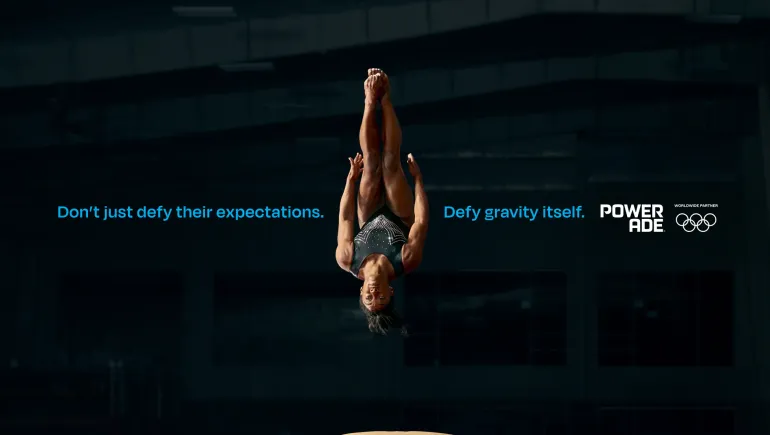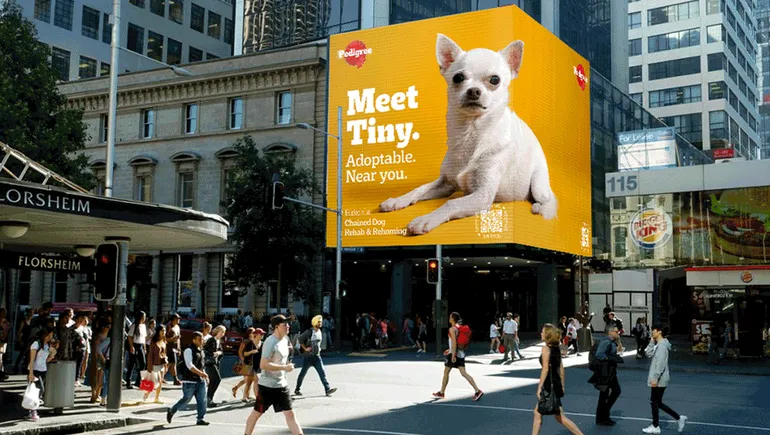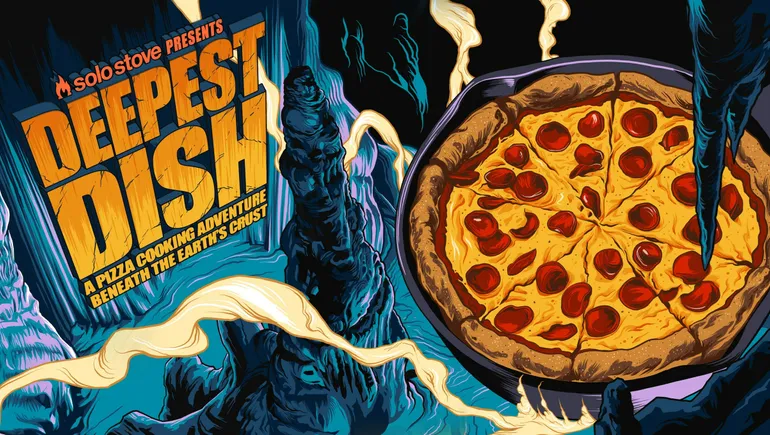
9 buzzworthy campaigns that set brands apart in 2019’s first half
The first half of 2019 showed no signs of lightening external marketing pressures, as looming data privacy laws posed existential threats to crucial tactics like online ad targeting and political controversy continued to embroil brands in hot water — or embolden them.
But turbulent times can produce stellar creative ideas, as efforts from companies ranging from Ikea to Reese’s proved. Below, we break down the 10 campaigns that stood out most in H1, either for their resonant messaging, savvy application of digital technology or, in many cases, a combination of the two.
Gillette looked to redefine masculinity — despite negative outcry
Gillette set the year’s tone with the January debut of “We Believe,” a short film tackling toxic masculinity in media, marketing and society at large. The campaign, which evolved the Procter & Gamble group’s tagline from “the best a man can get” into “the best men can be,” called on men to hold each other accountable, especially in the #MeToo era.
In addition to the short film, Gillette launched TheBestMenCanBe.org and pledged to donate $1 million per year over the next three years to U.S. nonprofits that provide men with role models. Like similar campaigns from Bonobos and Axe, Gillette walked into a minefield by addressing thorny social issues in its advertising. The campaign generated millions of views on YouTube and Twitter, with different studies uncovering positive and negative consumer sentiment.
And while the backlash was perhaps predictable, Gillette remained undaunted, returning to similarly socially progressive turf in May to notch sentiment that was mostly (59%) positive. A second push highlighting a transgender teen’s first shave, plus the not-insignificant donations to organizations focused on providing men and boys with healthy role models, allowed Gillette to inoculate itself from claims of “woke-washing” and truly be the best it can be.
Taco Bell’s sold-out hotel getaway shows how much the brand can get away with
Taco Bell courted more than hungry late-night customers this summer. The chain debuted a Bell hotel concept in Palm Springs, California, where superfans could book a getaway to a resort that includes everything from sauce packet pool floaties to themed salons.
If the stunt sounds far-fetched, it’s one coming from a brand that’s steadily honed an experiential playbook and earned a fervent following. After all, if people are willing to get married at a Taco Bell, why wouldn’t they want to book a weekend for some fun in the sun with the Yum Brands branch?
Open from Aug. 8-12, The Bell has a limited number of rooms starting at $169 per night. The exclusivity hammers home Taco Bell’s confidence in the lengths devotees will go to to show their passion. That confidence was rewarded when reservations at The Bell sold out within two minutes of going live, CNBC reported.
Colonel Sanders bares his chest for Mother’s Day
Meanwhile, Taco Bell’s sister brand KFC rolled out a viral campaign for Mother’s Day that featured a younger, sexier version of Colonel Sanders as a “Chickendale” — a riff on Chippendales — ultimately generating millions of views. The steamy spot was one of the more absurd pieces of creative from the chain in recent memory, but extended KFC’s winning streak of grabbing consumer attention through irreverent, off-the-wall marketing.
The centerpiece video, dedicated to what is frequently one of the restaurant’s biggest sales days, features Sanders alongside real Chippendales dancers, ripping off his shirt to reveal a six pack of abs. The effort stood out for its willingness to take the mascot in a surprisingly raunchy direction while still building on prior stunts timed around the holiday, like a full-fledged romance novella.
The “Chickendales” push also included a website where customers could create a personalized version of the video to send to their mom. Other standout KFC work from the past few months included the release of limited-edition Colonel Sanders Funko Pop figurines, which sold out in 11 minutes.
Ikea’s cheeky Kama Sutra play helps shoppers find bedroom nirvana
Ikea unveiled a campaign in March that played off the ancient Indian text on intimate positions, the Kama Sutra. A shoppable online catalog contained illustrations of 20 bedroom furniture “positions” that showcased room layout tips, design inspiration and décor recommendations. Featured positions included “The Busy Hands” for customers seeking efficient studio space and “The Doggy Style” for pet owners.
At 44 pages, “The Ultimate guide to Bedroom Satisfaction” aimed to deliver lighthearted interactive content to online shoppers one year after Ikea announced it would cut the distribution of paper catalogs in half to make room in the budget for marketing. In addition to the novelty factor, the shoppable pages added a level of innovation and could help Ikea drive direct sales. The campaign fits into the retailer’s broader strategy around helping consumers create their perfect home and a frequently quirky approach to marketing.
Ikea’s racy Kama Sutra campaign followed a similar tongue-in-cheek effort by Kraft Heinz’s Devour brand. The frozen food line ran ads on the website Pornhub in January with the tagline “See hot food porn now” and dropped a Super Bowl ad depicting a woman struggling with her boyfriend’s “insatiable addiction to frozen food porn.”
Reese’s cup runneth over with feature-length ASMR film
Forget six-second ads: Reese Canada went feature-length with “Reese: The Movie,” an 82-minute exploration of autonomous sensory meridian response (ASMR) and its iconic peanut butter cup, which goes by the slightly different brand name Reese in that country instead of Reese’s, as it is known in the U.S.
“Reese: The Movie” stars five “ASMRtists” who gained online notoriety by creating the sensory experience on their YouTube channels, which command anywhere from 150,000 to more than 2.7 million followers. The film features the influencers exploring the ASMR possibilities of the Reese Peanut Butter Cup, from opening the package to eating the treat.
ASMR has ballooned in popularity from niche interest to YouTube sensation. The chills-and-tingles technique has previously been utilized in campaigns by Zippo and Michelob Ultra Pure Gold, which deployed it for its first-ever Super Bowl spot this year.
But Reese outdid its fellow ASMR brand adopters with the feature-length film. By utilizing a genre popular on YouTube before heading to OTT services like Hulu and Crave (and then back to YouTube), Reese connected with ASMR devotees wherever they were, notching millions of views across a teaser and the full movie.
Adobe parodies influencers with unbranded short film
While most marketing naturally touts a brand either visually or through dialog, Adobe took an unconventional route in April with a cinematic short film that included no logos or company references. The 11-minute clip “In the Time it Takes to Get There,” directed by Zach Braff, parodies social media influencers through the lens of a 19th-century star who’s fed up with getting dolled up daily to post selfies and hawk products she hates.
The original video, created with agency Pereira O’Dell and RSA Films, is the result of a broader campaign that kicked off last year to encourage college students to test Adobe’s design apps and submit a poster for the chance to help transform their work into a short film. After the contest winner was selected, Adobe let its creative partners steer video production.
In its first three weeks, the spot snagged more than 1 million organic views on social media and 150,000 engagements with students, per figures shared with Marketing Dive. These stats demonstrate the potential power of brands producing parodies — even around industry darlings like influencers — and other original video content to connect with ad-fatigued consumers.
Oreo reigns over ‘Game of Thrones’ marketing tie-ins
The “Game of Thrones” finale was one of the bigger media stories of the year’s first half, so it’s no surprise that a number of brands tried to hitch their wagon to the excitement. But while fans’ ultimate disappointment with the final season of the long-running series could limit the long-term impact of these efforts, one brand garnered significant enough attention during peak “Thrones” mania to stand out: Mondelez brand Oreo reimagined the opening sequence of the show done entirely with cookies, becoming one of the most impactful tie-ins, YouGov research revealed.
The 50-second video, which was also cut into a 15-second TV ad, was created to promote limited-edition “Thrones” packaging and has close to a million views on YouTube at press time. Oreo also saw the biggest lift in positive discussions, or buzz, among brands associated with the show, according to YouGov.
Customized packaging is a big investment for brands but Mondelez succeeded better than most via an entertaining video that hit when consumer interest in “Thrones” was still at its height.
Kylie translates social influence to programmatic OOH milestone
Kylie Jenner’s out-of-home (OOH) campaign this spring promoting her new skincare line claimed to be the largest-ever programmatic billboard push, showing that the celeb’s power doesn’t end on apps like Instagram. By reaching audiences simultaneously in over 1,100 cities and pushing ads to over 5,500 signs, including in locations like Times Square and Las Vegas Boulevard, the Kylie Skin campaign underscored the potential in bridging social influencers with an expanding digital OOH market.
The results also reinforced Jenner’s savvy as a marketer, after she previously built an $800 million beauty empire in three years. The star’s immense following, combined with programmatic OOH technology, helped sell out the Kyle Skin line in six minutes, showing that OOH campaigns can effectively drive sales, not only in stores, but also online. Jenner received an assist from Adomni, an ad platform that allows customers to buy any of 1,000-plus targeted audience segments across nine categories.
The outdoor milestone additionally captured the renaissance currently happening for a traditionally static marketing channel. In March, a report from the Out of Home Advertising Association of America found OOH spending reached a record high in 2018, with digital OOH representing 29% of total OOH revenue.
Mastercard cuts through the noise with new sonic identity
As other marketers tuned up their audio playbooks, Mastercard stayed ahead of the game with the introduction of a sonic brand identity in February. The concept, part of a broader refresh that drops the word “Mastercard” from the company’s visual logo, recognized how omnipresent brands need to be across touchpoints, including on mobile and for increasingly popular tactics like contactless payments and voice search, where the screen is a less reliable factor.
Mastercard developed what it calls a “comprehensive sound architecture” over the course of two years through what executives described as a “big” investment, and has been promoting the aural branding through a multichannel campaign that debuted around the Grammy music awards.
The effort proved prescient in a year when audio marketing continued to blow up and platforms and agencies tried to meet the mounting demand for modern engagement strategies. In June, Pandora went as far as launching an in-house marketing consultancy with the express purpose of helping brands design audio materials like sonic logos. Sound familiar?





